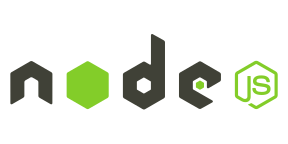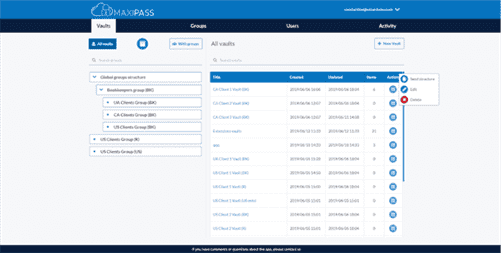Code frameworks and libraries also standardise chunks or modules of code for common user-facing functionalities. Whatever the preferred terminology, the core point is that if an app is intended to be run in a cloud environment, it is generally far more efficient to also develop and test it in the same cloud environment. Lastly, while quadrant 4 industries enjoy high margins, their market dynamics might make it harder to extract value from cloud. The electric power and natural gas industry (3 percent absolute EBITDA lift) is highly regulated, with well-defined geographic areas and limits on consumer pricing making it more challenging to rapidly extract cloud value. The third dimension, pioneer, involves exploring business models by experimenting with new and emerging technologies, such as blockchain, quantum computing, augmented and virtual reality, and 3-D printing. Given the nascent stage of these technologies, it is far too early to quantify their potential impact over the next decade with any reasonable precision.
Cloud Development may also be referred to the actual process of creating any of the cloud computing solution / service model such as IaaS, SaaS or PaaS. The question that remains for organisations is how to best manage the cultural and skills transition to a DevOps culture and cloud native development. Retail is an industry where certain companies are exploring the boundaries of the “selective differentiation” grouping. While most retail companies have utilized cloud for back-office optimization and cost savings, some pioneers are beginning to leverage it in ways that enable business growth rather than simply cost control. One large retailer has used Google Cloud to transform its brick-and-mortar business and develop its e-commerce and omnichannel capabilities by launching new services, such as drive-up orders and curbside pickup. Innovate includes value that is largely revenue related, with use cases such as advanced analytics, IoT, and automation driving growth, optimizing business operations, and improving time to market.
What are the challenges of cloud-native development?
Data arrangement is another important point to consider in a cloud app design. You may place different parts of cloud computing solutions on different cloud servers (public and private clouds). Cloud app architecture should define this segregation and placement of data on the cloud computing resources. This cloud development method allows businesses to leverage cloud benefits in some of their services while not changing the whole software application code. While 2020 was difficult for many small businesses, things couldn’t be better for cloud operators.
Applications should be provided to the customer if they have unresolved known vulnerabilities. Penetration testing mechanisms are therefore needed to assess potential exploits better and address critical application shortcomings. Pricing-wise, cloud service providers widely adopt pay-per-usage fees, meaning that organizations are only charged for the resources they use. This means it’s much more convenient to manage overspending and provides a safety net if the operations need to be quickly shrunk.
Choose the Deployment Model
Cost efficiencies and scalability are also realised from server resource pricing based on what is actually used. Cloud-native development offers many advantages to both developers and businesses, such as faster time to market, higher quality and reliability, and lower costs and risks. The decade saw an explosion of new business and consumer cloud services along with construction of the hyperscale data centers required to operate them, with Apple iCloud, jenkins integration IBM Cloud and Oracle Cloud all launching. The decade’s latter half saw the rise of container infrastructure — namely, Docker container runtime and image format, and the Kubernetes cluster manager — as a replacement for VMs. Every cloud service soon introduced container management services and hybrid products, such as Docker Enterprise, Red Hat OpenShift and VMware Tanzu, offering workload portability between private and public cloud environments.
- They will allow your team to use the time once spent managing server resources and manual testing and deployment, to focus on improving existing products and better, more innovative new creations.
- Cloud-native development has evolved from a buzzword to a full-fledged movement.
- Relying only on the currently available on-premises leaves companies with only a few resources.
- Team and project planning with plenty deliverables, including development roadmap, config management and QA plan.
- She also serves as the lead partner for the National Office revenue recognition team.
- Traditional on-premise setups will have to be configured from the ground up, meaning that additional investments are very likely.
That includes consumer services like Gmail or the cloud backup of the photos on your smartphone, though to the services that allow large enterprises to host all their data and run all of their applications in the cloud. For example, Netflix relies on cloud-computing services to run its its video-streaming service and its other business systems, too. Cloud computing is the delivery of computing services—including servers, storage, databases, networking, software, analytics, and intelligence—over the Internet (“the cloud”) to offer faster innovation, flexible resources, and economies of scale. This is true in cloud software development, as poor architecture leads to wasted resources and fixing an error early is way cheaper than correcting it after deployment. Likewise, good UX design is capable of boosting traction and securing the next round of investment.
Benefits of software development in the cloud
Whatever stage of cloud adoption your company is at, DevPro has the experience and resources to help you quickly migrate from on-prem to cloud or scale your existing resources to fit your business requirements. Whether developing locally or in the cloud, you’ll eventually want to deploy your code to a server. Developers can create workstations that define development environments with a Cloud IDE, language tooling, libraries, and more. They can start/stop them on demand with data stored between sessions if attaching a PD. Developers develop the architecture of cloud-native apps from scratch or refactor existing code extensively to work on a cloud using cloud-based technologies. As Gartner positions CDEs as a technology poised for major near-term growth, Daytona stands at the forefront, shaping the future of how enterprises approach software development.
It cuts down on the upfront investment involved in establishing on-premise server capacity. And allows for scalability in computational power and data storage capacity, which reduces the risk of outages at peak times of demand. However, the underlying app architecture is largely the same as it would be in the case of a traditional app. If you are considering cloud-native development, there are several steps to take. First, assess your current situation and goals by analyzing existing applications and infrastructure, and identify business needs and objectives. Then, choose a cloud strategy and provider that best suits your needs and preferences.
Our Conclusive Thoughts on Cloud-Native Development
SitePoint has recently published examples of local development environments for Linux, Windows and Mac. Since Cloud Workstations run inside your VPC, code is run inside your private network and in your staging environment without the need to emulate your services. Plus you can apply security mechanisms at the network level, like VPC Service controls, private ingress/egress, Cloud Audit Logs, and granular IAM controls.
Certain services may not be available to attest clients under the rules and regulations of public accounting. Having a single model that results in more capitalized costs is incredibly unpopular with many that want a dual model. They would prefer to expense everything if the software is being sold, whether it’s sold on-prem or as SaaS, while software costs are capitalized for those that are truly for internal use only—like ERP systems. Many would prefer to expense everything if the software is being sold, whether it’s sold on-prem or as SaaS, while software costs are capitalized for those that are truly for internal use only—like ERP systems.
What about cloud-computing security?
Docker, Kubernetes, and other container orchestration tools are helpful in this area. In this article, let’s breeze through the evolution of cloud-native development and deployment. We will also explore its inception, growth, and the exciting future that lies ahead.
Granular architecture is created based on requirements and resources available. System components are defined and a front-page architecture draft is considered. The initial process assignment and task distribution between teams takes place.
Performance issues
This provides consistently smooth site performance to end users, which is supported using AWS CloudFront. However, the relationship between cloud adoption of workloads and incremental value is not a direct correlation, as adoption alone has proven to be insufficient in generating sustained returns from cloud. For example, in the “focused value” world, companies implement a small number of analytics or digital use cases in a cloud-native way, dramatically improving business performance by improving cross-sell or customer retention. Many companies remain concerned about the security of cloud services, although breaches of security are rare. How secure you consider cloud computing to be will largely depend on how secure your existing systems are. In-house systems managed by a team with many other things to worry about are likely to be more leaky than systems monitored by a cloud provider’s engineers dedicated to protecting that infrastructure.
Traditionally, applications and business tools were developed, built and tested on a physical computer and run on local servers. A development environment is a workspace that allows software developers to make changes without breaking anything in a live environment. A cloud development environment takes this same environment, but instead of being installed on a physical hard drive, the environment “lives” in the cloud and is accessed via a browser.
If your environments aren’t working, the ENTIRE team is blocked – and there’s no greater fear for any development team. Rather, go with a trusted provider (Nimbus, Github Codespaces, or Gitpod) or build a team of experienced infrastructure developers to create a customized solution for your specific team and org. IaaS offers core cloud computing services like servers, storage, and networking on demand. In cases when new applications have launched, this type also helps to quickly provision them and extend the reliability of existing infrastructure. Usually, payment costs are collected based on using a particular resource, allowing you to install and manage your software on top.


